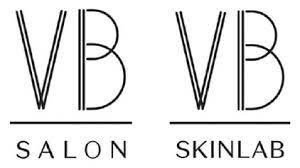If you are at a trivia night, and the question is “what product in Australia is well known with reference to the initials ‘VB’”, there is a reasonable chance a lot of people would answer “Victoria Bitter” beer. Victoria Bitter is well known in Australia simply with reference to “VB”.
Despite an extensive reputation in the initials VB, Carlton & United Breweries do not have any registered trade marks in word format for VB. Rather, all relevant trade marks for VB beer contain the initials VB as part of a logo and with the initials in stylised format. This is because under section 41 of the Australian Trade Marks Act 1995 (Cth) (the Act) a trade mark must be inherently adapted to distinguish before it can be registered. Two and even three letter initials or acronyms rarely satisfy the requirements of section 41 of the Act, unless accompanied in stylised format as part of a logo or with other distinctive elements.
Fashionista and former posh spice girl, Victoria Beckham recently opposed registration of two trade mark applications filed by Australian company VB Skinlab Pty Ltd (Victoria Beckham v VB Skincare Pty Ltd [2020] ATMO 36 (9 March 2020)) (the VB Opposition Decision). The two trade marks which Victoria Beckham opposed in the VB Opposition Decision are stylised versions of the initials VB, together with the tag line “SKINLAB” and “SALON” respectively, as set out below:

For convenience the above logos will be referred to as the VB Skinlab Marks.
The delegate of the Australian Trade Mark Office (ATMO) found in favour of VB Skinlab Pty Ltd in the VB Opposition Decision. Victoria Beckham has now appealed the VB Opposition Decision to the Federal Circuit Court (the VB Court Case).
Appeals to the Court from the decision of the ATMO are de novo hearings under section 56 of the Act, meaning the Court will hear the VB Court Case afresh and exercise its original jurisdiction. As part of this process, each party will be entitled to file new and additional evidence, including any evidence considered by the ATMO.
Celebrity endorsements
Celebrities endorsing products is common. Indeed, and important element of the VB Opposition Decision and now the VB Court Case is that Victoria Beckham launched a cosmetic goods collection in conjunction with Estee Lauder, with the cosmetic products bearing the initials ‘VB’ (the VB Word Mark).
In the VB Opposition Decision, the ATMO was not persuaded by Victoria Beckham’s arguments that she had a sufficient reputation in the VB Word Mark in respect of cosmetic products to establish any of the grounds of opposition. Whether additional evidence will be presented to the Court in relation to this purported reputation, and the weight the Court gives any such additional evidence, will be interesting elements of this case.
What will not assist Victoria Beckham in this case is that unlike some jurisdictions, Australia does not recognise a “right to publicity” or “personality rights” as a specific legal right. However, there are other Australia laws, including sections 18 and 29 of the Australian Consumer Laws which do prevent a third party from misrepresenting a sponsorship, affiliation or approval which does not exist. The resulting protection under these laws can be highly fact and circumstance specific, making the outcome unpredictable from celebrity to celebrity and case to case.
In Hogan v Koala Dundee Pty Ltd (1988) 83 ALR 187, Paul Hogan successfully prevented the sale of merchandise that was strongly reminiscent of Hogan’s role in the film Crocodile Dundee. Conversely, in Elvis Presley Enterprises Inc v Elvis Jelcic [2008] ATMO 103, the estate of Elvis Presley were unable to prevent the registration of the trade mark ElvisFINANCE.
Celebrity endorsement cases in Australia generally turn on a principle that the closer the association to a celebrity, the greater the risk of the relevant public being misled, deceived or there being a misrepresentation by suggestion of affiliation, sponsorship, approval, endorsement, recommendation or other connection.
The VB Opposition Decision
In the VB Opposition Decision, the delegate of the ATMO determined that Victoria Beckham failed to establish any of the grounds of opposition stated in a Statement of Grounds of Particulars seeking to prevent the registration in Australia of the VB Skincare Marks. Those grounds of opposition, which will again be the grounds of opposition in the VB Court Case were:
- Use of the VB Skincare Marks would be contrary to law (section 42(b) of the Act)
- VB Skinlab Pty Ltd is not the owner of relevant trade mark (section 58 of the Act)
- The VB Skincare Marks are similar to a trade mark (being the VB Word Mark) that has acquired a reputation in Australia (section 60 of the Act)
- The VB Skincare Marks applications were made in bad faith (section 62A of the Act)
In support of the grounds of opposition, Victoria Beckham’s lawyers argued, amongst other things, that Victoria Beckham had been using the VB Word Mark in relation to cosmetic goods in Australia and internationally and had established a significant reputation in the VB Word Mark in fashion apparel and accessories, with such use and reputation arising approximately two years prior to the applications to register the VB Skincare Marks.
Section 42 of the Act provides that an application to register a trade mark must be rejected if (b) its use would be contrary to law. The onus to prove use contrary to law rests with the opponent on the balance of probabilities [Advantage Rent-a-Car Inc v Advantage Car Rental Pty Ltd [2001] FCA 683.] . In the VB Opposition Decision, Victoria Beckham argued that the registration of the VB Skincare Marks would be contrary to law by reference to sections 18 (misleading and deceptive conduct) and 29 (false or misleading representation about goods) of the Australian Consumer Law (as contained in Schedule 2 of the Competition and Consumer Act 2010 (Cth) and the common law of passing off.
In relation to the section 42 ground, the ATMO determined that none of the proposed reasons were sufficient to determine a finding that the use of the VB Skincare Marks would be contrary to law. A significant reason here was that the evidence showed that many of the cosmetic products sold or promoted by Victoria Beckham where primarily under the brand “Victoria Beckham” or under the well-known Estee Lauder brand rather than the VB Word Mark.
Although referring to the section 60 grounds, the statement applies equally to the section 42 grounds where the ATMO stated in the VB Opposition Decision:
While noting the significant fame of the Opponent and the evidence of substantial promotion of the Opponent’s cosmetics line through free media and the Opponent’s social media presence, the short time of use, limited sales and use of other marks (namely VICTORIA BECKHAM and ESTEE LAUDER) to promote the Opponent’s products satisfies me that the VB Mark had, before the relevant date, acquired at best a very limited reputation in Australia for cosmetic products.
This limited specific reputation in relation to the VB Word Mark was therefore problematic to Victoria Beckham’s ground under both section 42 and section 60 of the Act.
Whether Victoria Beckham can overcome these limitations with additional evidence or alternative materials in the VB Court Case remains to be seen.
Section 60 of the Act provides that registration of a trade mark in respect of particular goods and services can be opposed on the grounds that:
(a) another trade mark had, before the priority date for the registration of the first‑mentioned trade mark in respect of those goods or services, acquired a reputation in Australia; and
(b) because of the reputation of that other trade mark, the use of the first‑mentioned trade mark would be likely to deceive or cause confusion.
In the VB Opposition Decision, the ATMO held that the intention of reputation in the context of section 60 of the Act is said to derive from both “the quantum of sales under that mark and also its esteem, or image, projected by that trade mark”.
The ATMO found in relation to section 60, that Victoria Beckham had acquired a “substantial” and “exclusive reputation and goodwill amongst a significant section of the Australian public, particularly consumers of cosmetics goods” and that the reputation had been acquired by extensive use of the VB Word Mark. Accordingly, section 60(a) of the Act could be satisfied.
In relation to section 60(b) of the Act, the courts have held that a trade mark is likely to deceive or cause confusion where consumers are likely to question whether the products and services come from the same source [eg Registrar of Trade Marks v Woolworths Ltd [1999] FCAFC 1020; (1999) 45 IPR 411]. Other considerations include the strength of the reputation of the opponent’s trade mark and the degree of similarity between the trade marks and the goods and services of the parties.
In the VB Opposition Decision, the ATMO determined that while the respective brands had the common VB element, the marks were sufficiently different so as not to cause confusion. Furthermore, Victoria Beckham had a limited reputation in cosmetics, and a number of the relevant products contained the Estee Lauder brand rather than the VB Word Mark.
Trademark registration and ownership
Pursuant to section 58 of the Act, registration of a trade mark can be opposed on the ground that the applicant (ie VB Skincare Pty Ltd) is not the owner of the trade mark. Ownership of a trade mark at common law is established through use of the trade mark [see eg Food Channel Network Pty Ltd v Television Food Network GP [2010] FCAFC 58]. Where there is use of a trade mark, the owner of an unregistered trade mark for particular goods and services is determined on the basis of first use of the trade mark in the course of trade for the particular goods and services [Seven Up Co v OT Ltd (1947) 75 CLR 203)]. Where there is no use, the first person to apply for a trade mark will usually be entitled to claim ownership [Shell Co (Aust) Ltd v Rohm and Haas Co (1948) 78 CLR 601].
In the VB Opposition Decision, it was confirmed that in order to succeed under a section 58 ground of opposition, Victoria Beckham would need to establish that:
- the VB Skincare Marks were identical or substantially similar to the VB Word Mark; and
- the VB Skincare Marks goods ‘are the same kind of thing’ as the VB Word Mark goods; and
- that a person other than VB Skinlab Pty Ltd has the earlier claim to ownership of the VB Skinlab Marks based on use of the trade mark(s) relied upon by Victoria Beckham prior to whichever is the earlier of: (a) the application to register; or (b) any actual use of the VB Skinlab Marks by the VB Skinlab Pty Ltd.
The ATMO determined the second and third factors were established in favour of Victoria Beckham’s use of the VB Word Mark. In considering whether the VB Skinlab Mark and the VB Word Marks were identical or substantially similar, the ATMO confirmed the test for substantially identical as set out in Shell Co of Australia Ltd v Esso Standard Oil (Australia) Ltd (1963) 109 CLR 407, that the marks should be:
compared side by side, their similarities and differences noted and the importance of these assessed having regard to the essential features of the registered mark and the total impression of resemblance or dissimilarity that emerges from the comparison.
In comparing the respective trade marks, the ATMO found that there were clear differences between the mark, including stylisation and in respect of the VB Skinlab Marks, the existence of an additional word. The ATMO accordingly concluded that the respective trade marks were not substantially identical. It followed that the third limb of the section 58 test could not be established, so Victoria Beckham has failed to establish the section 58 ground of opposition.
It will be difficult for Victoria Beckham to overcome this hurdle in the VB Court Case unless her lawyers can successfully argue that the words “Skinlab” and “Salon” should be discounted from the VB Skincare Marks on the basis that they describe the relevant goods. Unsurprisingly, this argument was indeed presented by Victoria Beckham’s lawyers in the VB Opposition Decision, but the ATMO held (in relation to the words “Skinlab” and “Salon”):
I do not accept the Opponent’s Submissions that each of these differences should be discounted, with the only essential element being the letters VB. In particular while the term ‘skinlab’ has some use in the cosmetics industry, it is not descriptive of the Applicant’s Goods and thus it is not appropriate to be ignored for the purposes of comparison.
Grounds of opposition pursuant to section 62A of the Act where an application for a trade mark is made in bad faith are notoriously difficult to establish. The test for bad faith is whether “persons adopting proper standards would regard the decision to register as in bad faith, or that reasonable and experienced persons in the field would view such conduct as falling short of acceptable commercial behaviour.” [Fry Consulting Pty Ltd v Sports Warehouse Inc (No 2) [2012] FCA 81]
In the VB Opposition Decision the ATMO highlighted the serious nature of the allegation stating that “it will not be found easily” and went on to conclude that the registration of the letters “VB” in respect of VB Skinlab Pty Ltd’s goods and services was a decision advantageous to VB Skinlab Pty Ltd and not one “unscrupulous, underhanded on unconsciousness in character”. Unless new evidence is available to Victoria Beckham, it is difficult to see her succeeding in the VB Court Case pursuant to section 62A grounds.
Bend it like Beckham
In order to succeed in the VB Court Case, it is likely Victoria Beckham will be required to tender additional evidence that was not presented in the VB Opposition Decision. The rules of evidence did not apply to the VB Opposition Decision, but will now apply to the VB Court Case. If the evidence can establish that VB Skincare Pty Ltd clearly intended to associate themselves with Victoria Beckham through their VB styles branding, then a contrary to law ground could potentially be sustainable.
Victoria Beckham is undoubtedly well known as an international celebrity. Does she have a sufficient reputation in her initials “VB” in relation to cosmetic products to prevent registration of the VB Skincare Marks? The ATMO says “no”, for the reasons set out in that decision and referred to in this article.
Unlike a number of countries, Australia has no specific “right of publicity” or “right of personality” laws. This will make it more difficult for Victoria Beckham to succeed in the VB Court Case. However, as these cases turn very closely on the facts and circumstances, it remains possible that her lawyers will Bend it Like Beckham to prevent registration of the VB Skincare Marks. If that occurs, then this may be only half time in this battle, as Victoria Beckham may subsequently elect to pursue VB Skincare Pty Ltd for damages or an account of profits.
In the meantime, there is every chance this battle is heading for a nil-all draw. Without additional evidence, Victoria Beckham would appear to be facing a difficult legal battle. VB Skincare Pty Ltd is presumably anxious to avoid a long and costly legal dispute with a well-funded opponent. Accordingly, don’t be surprised if the parties agree to settle all matters relating to this dispute on a confidential commercial basis.
A confidential settlement would allow each party to save face in this battle over cosmetic branding.
This memo presents an overview and commentary of the subject matter. It is not provided in the context of a solicitor-client relationship and no duty of care is assumed or accepted. It does not constitute legal advice.
© Moulis Legal 2020


